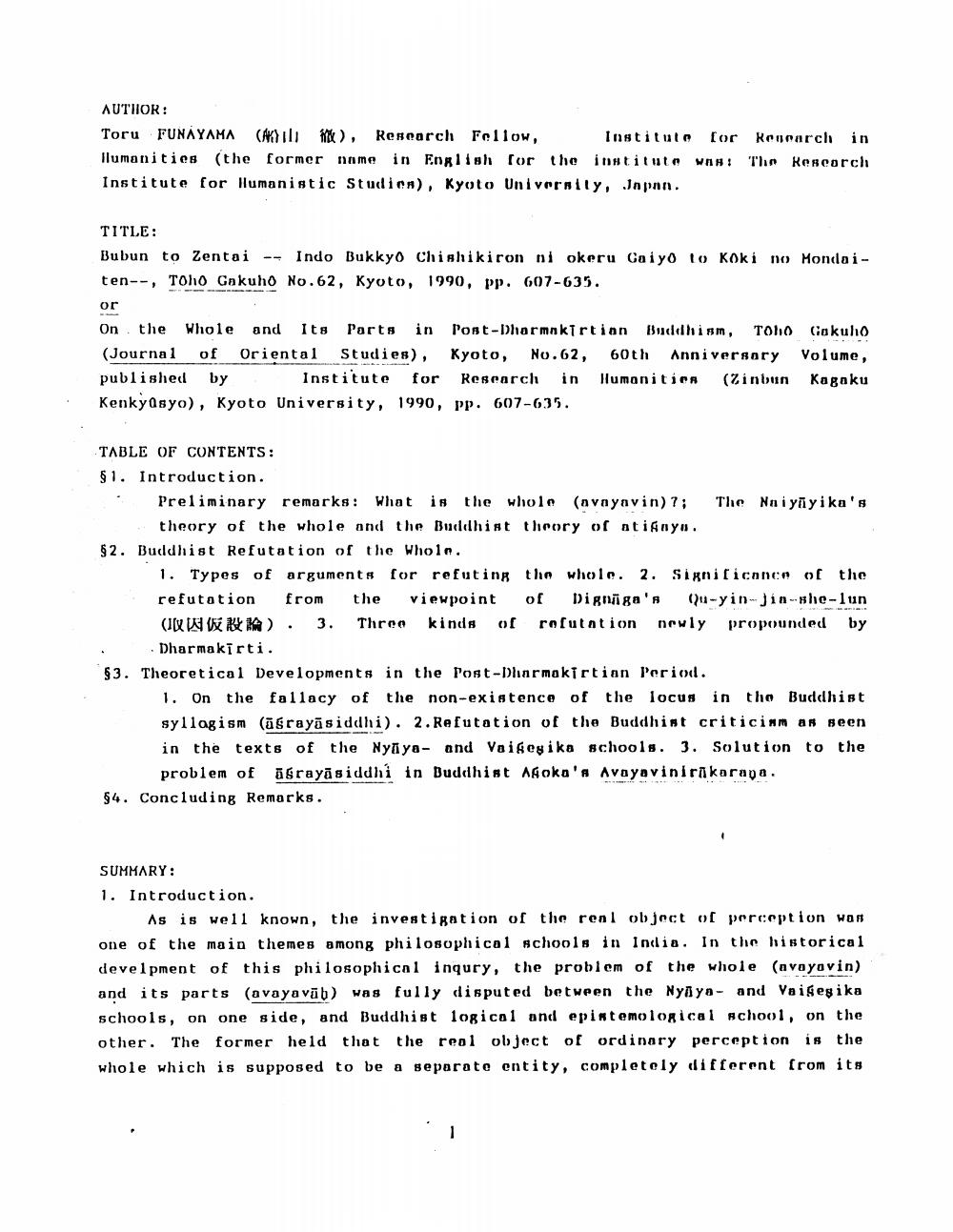________________
AUTHOR: Toru FUNAYAMA (Aili Wik), Research Fellow, Institute for Reinarch in llumanities (the former name in English for the institute was: The Rescorch Institute for Humanistic Studien), Kyoto University, Japan.
TITLE: Bubun to Zentai -- Indo Bukkyo Chishikiron ni okeru Gaiyo to koki no Mondai - ten--, TONO Gokuho No.62, Kyoto, 1990, pp. 607-635. or On the whole and Its Parts in Post-Dharmakirtion Buddhism, Tono Gokuho (Journal of Oriental Studies), Kyoto, N0.62, 60th Anniversary Volume, published by Institute for Research in Humanities (Zimbun Kagaku KenkyOsyo), Kyoto University, 1990, pp. 607-635.
TABLE OF CONTENTS: $1. Introduction.
Preliminary remarks: What is the whole (avayavin) 7: The Nniyayika's
theory of the whole and the Buddhist theory of atianya. $2. Buddhist Refutation of the wholn.
1. Types of arguments for refuting the whole. 2. Significance of the refutation from the viewpoint of Dignñga' Qu-yin-jin-she-lun (I W KEKA). 3. Three kinds of refutation newly propounded by
Dharmakirti. $3. Theoretical Developments in the Post-Dhormokirtian Period.
1. On the fallacy of the non-existence of the locus in the Buddhist syllagism (ūsrayās iddhi). 2. Refutation of the Buddhist criticinm an geen in the texts of the Nyaye- and Vaigogika schools. 3. Solution to the
problem of asrayās iddhi in Buddhist Agoko's Avayavinirikorapa. 94. Concluding Remorks.
SUMMARY: 1. Introduction.
As is well known, the investigation of the real object of perception won one of the main themes among philosophical schools in India. In the historical develpment of this philosophical inqury, the problem of the whole (avayovin) and its parts (avaya vāb) was fully disputed between the Nyaya- and Vaig eg i ka schools, on one side, and Buddhist logical and epistemological school, on the other. The former held that the reol object of ordinary perception is the whole which is supposed to be a separate entity, completely different from its




